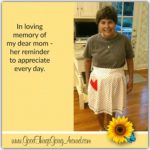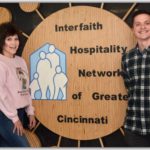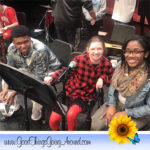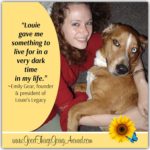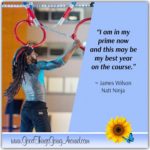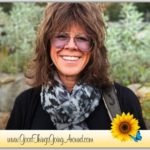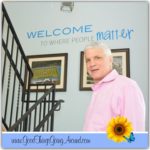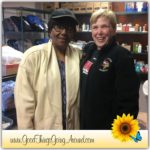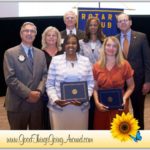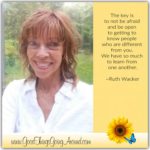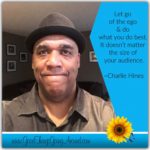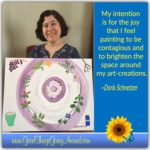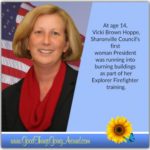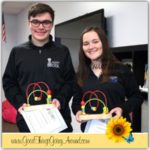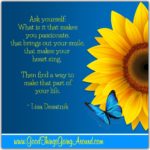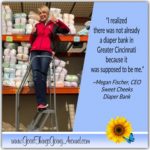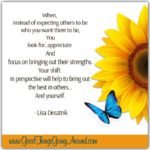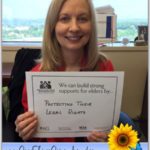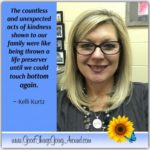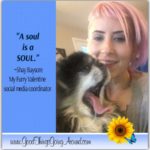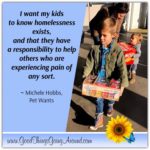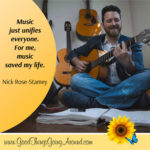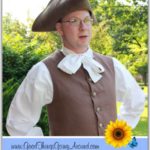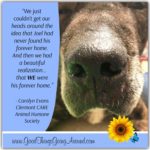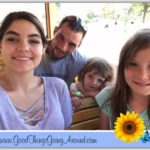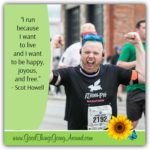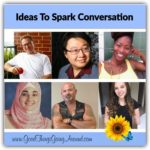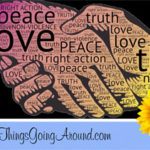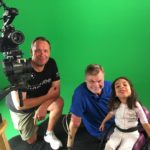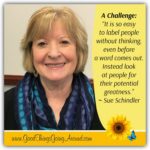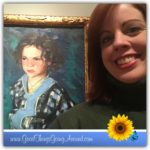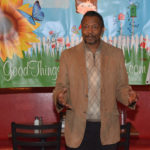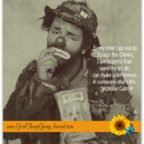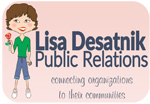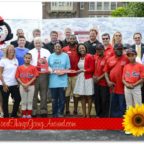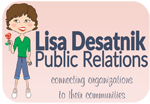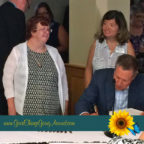Nicholas Gatrell Turns Sadness Into Smiles
We shared no words the first time we met, but no words were needed to communicate. His clothing was a conglomeration of tattered pieces of fabric wretchedly sewn together. His face bore the expression of deep, pensive sadness. And he walked with heavy shoulders, the weight of some sort of life circumstances boring deep in his soul.
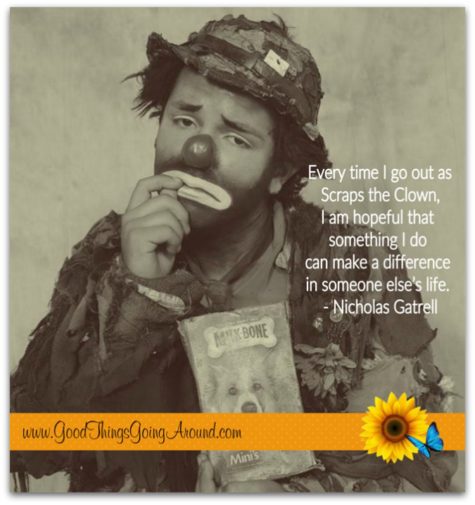 Nicholas Gatrell was just old enough to have been able to legally drive, although his mother was his chauffeur on that day. She also was, and still is, his agent, manager, and biggest fan.
Nicholas Gatrell was just old enough to have been able to legally drive, although his mother was his chauffeur on that day. She also was, and still is, his agent, manager, and biggest fan.
Now at age 20, Nicholas is often better known as his alter ego, Scraps the Clown, than himself. And he prefers it that way.
Completely self-taught and self-created, he is one of the few – if not the only – sad clowns in our region, perhaps even further out. He has an unbelievable gift to affect people, lift them up, give them courage, and empower them by his presence. (He also happens to be a gifted artist too and draws and paints clowns.)
Being Scraps the Clown is Nicholas’ passion and heart. It is now his full time job and one he hopes to pursue for a lifetime.
Please learn more about Nicholas below.
Lisa: How do people typically react to a sad clown?
Nicholas: It is very different from a happy clown that entertains with juggling, magic, balloons and other whimsy acts. As a sad character, I move slowly. People actually try to entertain ME instead. They want to make me happy. Kids are the most honest audience you can get. They will tell it like it is, and they will do everything in their power to make me a better person. They take my character so seriously and are so sold on everything I do. Most of the time, I can keep their interest for two to three hours.
When people see me as Scraps, it somehow helps them with their own insecurities. I am so much more relatable and more human than a happy clown.
In my entire seven year career, I have never broken character – although sometimes it is hard not to do, especially with a child that really takes to me.
Lisa: We’d love to hear about a story that has touched you from your performances.
Nicholas: I will never forget this little boy. It was about three years ago and I was performing as an ambassador of good will for a check company. I sat down with this boy, he was 7 or 8 at the time, and he was overjoyed by my attention and our playing with his hot wheels for about an hour. My mom took a photo of us, and when I showed it to his mother, she began crying. It turns out the little boy has autism and was not accepted by most of the world around them. Those kinds of moments and memories give me so 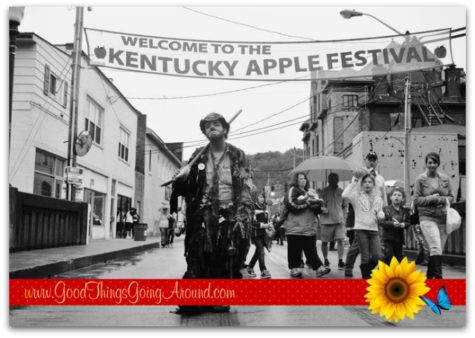 much more than any paycheck I could receive.
much more than any paycheck I could receive.
Lisa: Where did your interest for clowning come from?
Nicholas: Art and creative expression is something that runs in my family. My father is a graphic designer/artist and has also done a lot of commercial talent work. People enjoyed entertaining on my mom’s side too.
I have always been fascinated with clowns. When I was 10, my mom took me to buy my first pair of clown shoes with money I made delivering papers. I was about 12 years old when my mother brought me a big picture of a sad clown and we hung it on my wall. I remember looking at it and looking at it, and being so perplexed. When you see a clown that is sad, you can’t help but ask, ‘Why?’.
I began drawing and researching clown artists. It just kind of evolved. When I drew the clowns on paper, I got a feeling of what the character would be like as a person; and so then began painting on my face and just developed Scraps the Clown. The first time I went out in 2009, it was with no coaching from anyone. I made my whole costume by hand.
When I was 16, I was getting paid to perform at birthday parties and I kept getting more and more calls. As an illustrator, I also draw clowns. I am currently working on a poster for the American Clown Academy.
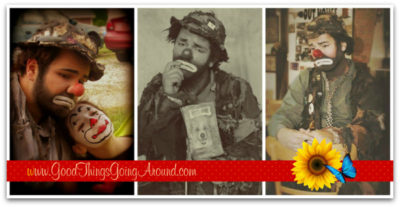 Lisa: Tells us about someone who has been a positive impact in your life.
Lisa: Tells us about someone who has been a positive impact in your life.
Nicholas: Definitely my mom. She has been and is my biggest supporter. She has worked so hard to make sure my brother and me have what we need, and would take the clothes off her back to make sure we succeeded. Mom was and will always be my example of what it means to be strong, confidant and giving. I carry her wisdom with me through everything I do. For Scraps the Clown, she is my agent, my driver, and my manager.
Lisa: What do you enjoy most about life?
Nicholas: Definitely performing, and making people laugh and smile. Being Scraps the Clown gives me a purpose that I wouldn’t have without it. It completes me. Everyone says they are put here with a purpose. I found my purpose when I was 13. I am extremely thankful for that.
Every time I go out there as Scraps, I am hopeful that something I do can make a difference in someone else’s life. I can’t think of anything else that I’d be happy doing the rest of my life.

Pat Meier’s Lesson On Empowerment
Today I’d like to introduce you to Pat Meier, a life coach and financial consultant. Pat and I met first virtually as Facebook connections, before becoming real life friends. She is someone with whom I have so much respect, for the life challenges she has faced head on and overcome, her resiliency, and her wanting to use those experiences as motivations for inspiring other women to gain strength, purpose and forward direction.
 In this interview, Pat opens up about a deeply personal challenge that has impacted her on so many levels. It was not easy to share, and her willingness to do so speaks volumes for her inner growth. She wanted to tell her story in hopes that it may help others to reach within themselves and find their great capacity to flourish as well.
In this interview, Pat opens up about a deeply personal challenge that has impacted her on so many levels. It was not easy to share, and her willingness to do so speaks volumes for her inner growth. She wanted to tell her story in hopes that it may help others to reach within themselves and find their great capacity to flourish as well.
Lisa: Where did your inspiration come from for becoming a life coach and financial consultant?
Pat: I became a life coach and therapist because I am passionate about inspiring and empowering women to get unstuck and move forward with creating their best life and living their vision. I found that psychotherapy wasn’t allowing my clients to move forward quickly and that life coaching didn’t always seem to include room for emotional healing. I call my work a hybrid, it helps my clients heal, grow and thrive more holistically and completely.
I recently added financial education and consultation to my services because I came to believe that it’s difficult, if not impossible, to build a life you love without a healthy financial foundation. I have a business partner who has been a financial advisor for 20 years and I am currently studying to get my securities license.
Lisa: Please tell us about someone who has been a positive influence on your life.
Pat: If I had to pick one person who has greatly impacted my life I’d say it was my high school art teacher, Mrs. Bolin. She set the bar high regarding the expectations she had of her students. She encouraged quality craftsmanship and presentation, creativity, commitment, consistent production and thinking outside the box. She inspired us and believed in ourability to create high quality works of art as well as exhibiting our work. She also” walked her talk” as she was a productive artist herself. She was a great role model for me, especially as a life coach.
Lisa: Please tell us about something you have overcome in life and how you have grown from it.
Pat: A personal challenge I’ve overcome in my life is learning how to manage my PTSD (Post Traumatic Stress Disorder) in order to live my life full out. I was sexually assaulted at age 28 while living in NYC and was challenged for many years with the symptoms of PTSD.
Because the body becomes stuck in a continual “fight and flight” mode I experienced years of often feeling hyper-vigilant and over-stimulated by any kind of environmental factors such as sound and temperature, and difficulty focusing. I developed fibromyalgia due to the toll that “fight and flight” mode and the contraction of muscles had on my body. I felt stuck emotionally and paralyzed to act and tap into the tremendous potential I knew I had.
In the 1980’s there was not a lot known about how to treat PTSD effectively. There were some therapies that worked on stimulating the brain and de-sensitizing the trauma. (EMDR). I researched and experimented for years on ways to heal from my trauma. I have always been really spiritual and my spiritual beliefs and understanding helped a great deal. It often felt like I was trying to cross the Grand Canyon to feel whole again, and although I didn’t know why I was meant to live such a challenging life, I had faith there was a silver lining and someday I would fit the puzzle pieces together. I went to therapists, energy healers back in the day when it was considered weird, body workers, did a lot human potential work, attended workshops and seminars, have been a long-time meditator, and more.
I managed to go back to school and get a master’s degree at Columbia University and to work and support myself. It was never easy as I looked normal on the outside but suffered on the inside from the symptoms of PTSD. Over many years I have eventually healed for the most part from the fibromyalgia and rarely do I experience PTSD symptoms anymore. Every now and then I get triggered and I need a few days to get back on track. Because I have lived my life for so many years from the inside–out I am very perceptive and in tune with my own internal compass and know who I am. I feel highly equipped to help others get to know themselves better in order to create a life based on true authenticity and their own personal values.
I have come to find that because of the circumstances I experienced earlier in life, my life purpose was revealed. My journey to healing through the trauma led me to my mission in life, which is to inspire and empower women to live their best lives. I also find it extremely empowering to give back to others who are still struggling. I am currently serving on the communications committee for The Board of Directors for Women Helping Women here in Cincinnati.
Lisa: What are some phrases by which you live?
Pat: Some of the mottos I live by are ‘The meaning of life is to live it” and “ It’s neither good nor bad, it just is.” I often remind my clients the second motto because we won’t make lasting change if we are judging ourselves. We need to learn to be compassionate with ourselves.
Lisa: Please tell us about your bucket list.
Pat: Some things on my bucket list include parachuting out of an airplane, traveling to Tanzmania in Africa and spending some time with the various tribes there. I recently became friends with a woman from Tanzmania whom I lived with in San Francisco. I’d like to travel with my work and give talks and workshops, nationally and internationally. I’d like to write a couple of books and live in the countryside with my future husband. I’d like for us to invite friends and family to visit and we would dine and wine them! As I get older I crave intimate connection and rejoicing in shared friendships with like-minded people.
Lower Price Hill Getting A Makeover
July 28 is going to be a big day for Lower Price Hill as hundreds of volunteers transcend on the ballfields at Evans Playground for a major renovation, the creation of a community garden, greenspace, AND a transformation of the Espy Boys & Girls Club into a youth center.
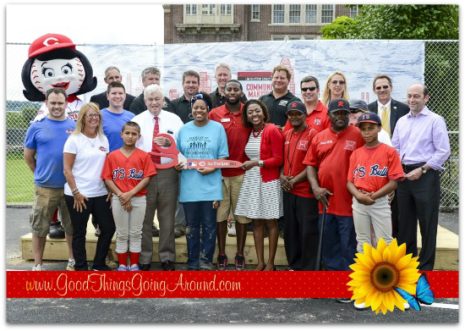
From the ribbon cutting at the 2015 Community Makeover recipient: West End: Seven Hills Neighborhood Houses, Sands School playground and Dyer ballfields
It is all happening because Procter & Gamble, the Cincinnati Reds and the Cincinnati Zoo & Botanical Garden have chosen the Cincinnati neighborhood of Lower Price Hill as the winner of the 2016 Community Makeover.
Elements of the Community Makeover will include:
- Evans Field and Playground: Upgrade existing baseball fields and park amenities
- Community Gardens: Develop largest greenspace in Lower Price Hill with natural playscape and learning gardens for children
- Espy Center: Upgrade the former Boys & Girls Club in partnership with Community Matters and Santa Maria Youth Services
Other project partners include Cincinnati Children’s Hospital Medical Center and Interact For Health and partners from the community include Community Matters, Santa Maria Community Services, Community Learning Center Institute, Bloc Ministries, Cincinnati Recreation Commission and the City of Cincinnati’s Neighborhood Enhancement Program (NEP).
P&G, the Reds and the Zoo’s investments in Lower Price Hill will provide significant and sustainable impact, including reducing operating costs and energy usage and investing in the long-term development of the community and its residents.
To learn about needed donations and how you can help, please contact the Reds Community Fund at 513-765-7231 or CommunityMakeover@reds.com.
P&G and the Reds Community Fund have partnered for the Community Makeover since 2010 and the Cincinnati Zoo joined the partnership in 2013 and brings a wealth of experience in horticulture, sustainable design and maintenance to the projects.
The goal of the annual program is to choose a neighborhood renovation project that improves local youth baseball and softball programs while making a significant impact on the community and its residents.
Past Community Makeover projects:
- 2010: Winton Place: Brandon Phillips Field and P&G Field
- 2011: North College Hill: High school field and community center plus youth field in Winton Place
- 2012: Cheviot: Memorial Fields, historic grandstand and Cheviot Memorial Fieldhouse
- 2013: Avondale: Gabriel’s Place, Hirsch Recreation Center and Hirsh ballfields
- 2014: South Cumminsville: Wayne ballfields and Millvale Recreation Center
- 2015: West End: Seven Hills Neighborhood Houses, Sands School playground and Dyer ballfields

Susan Brownknight Is A Changemaker
In my shared quotes, I have talked a lot of how, to bring out the best in others, to give them wings that will raise them to their greatest potential, you need to focus on their strengths. You need to believe in them enough to be able to step back and allow them to grow through experience. You need to lead with integrity and resolve. You need to have passion for your cause.
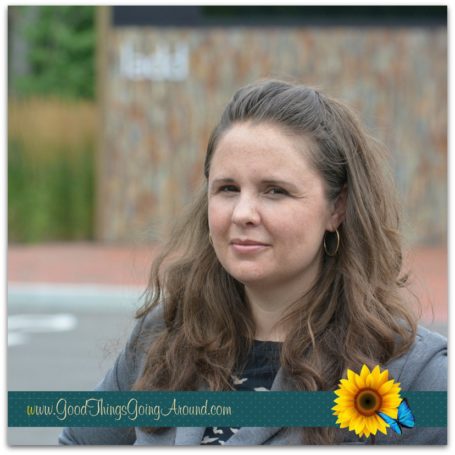 Susan Brownknight, executive director of Living Arrangements for the Developmentally Disabled (LADD), is one of those leaders and I am one of the fortunate ones who has been given wings while working with her.
Susan Brownknight, executive director of Living Arrangements for the Developmentally Disabled (LADD), is one of those leaders and I am one of the fortunate ones who has been given wings while working with her.
Susan first hired me as the contracted role of director of communications and media for the 2015 Cincinnati ReelAbilities Film Festival. (Then, she was director of development and public relations for LADD, the managing organization of ReelAbilities.) I was charged with the developing and implementing a vast communication plan that would raise the relatively unknown event into a massive success that would catapult it into one of the region’s gem attractions. That campaign (with help from lots of volunteers, partners and staff) was a massive success and will always be one I look back on with huge pride.
In a recommendation afterwards, Susan said of me, “Lisa was a key reason why we were so successful, selling out the majority of our events and creating an organic “buzz” that proved invaluable.”
BUT, I have to say, I was able to achieve what I did because of the leadership for which I was working. Susan has all those leadership skills I described above and more. She believes in people and their abilities. She gives them wings. She is also a real pioneer, an organizer, an energizer and a doer.
LADD is a Cincinnati nonprofit organization that is recognized as a leader in helping adults who experience a developmental disability to live independently and reach their aspirations. They do that through housing, education and other support services to more than 500 individuals and their families.
I believe wholeheartedly in their mission. Wanting to help people see and reach for their greatest potential is our shared passion.
And, while circumstances caused me to not be able to serve in my role with the next upcoming Film Festival, I am thrilled to be back working with Susan and the team of LADD to tell the organization’s story.
Please take a few minutes and learn more about Susan, and where her inspiration for leadership comes from.
Lisa: Prior to joining LADD, your resume includes having worked at the Cincinnati Nature Center (in development and marketing) and for the Sierra Club. Why did you shift your focus into the disability field?
Susan: Really, in all of my jobs, my focus has always been on people and communities. While at the Nature Center, I really wanted to return to more direct connections. I have always felt I was called to do that. At LADD, what I do is on that same theme of giving voices to individuals and communities. There is so much work needed to be done around affordable housing, giving people a voice, and equal opportunities. LADD touches on all of the issues I have grappled with.
When you have an opportunity to work with incredible people, you have so much gratitude on a daily basis. The employees at LADD are truly exceptional people and as I have matured, I value them more. They challenge me and I hope they say I challenge them to be their best.
Lisa: You volunteered for the Homeless Coalition years back. What lessons did you learn from that experience?
Susan: There are so many people who have unbelievable tragedy in their lives who are inspired by love. I moved to Over-the-Rhine in 1997 and volunteered at Drop Inn Center. A month into volunteer time, Buddy Grey (a tireless advocate for those who are homeless) was murdered. I was thrown into the deep end. Buddy was such a force. Andy Hutzel was my boss and I took a lot of guidance from him. At such a young age himself, despite his devastating loss, all Andy cared about was supporting those around him.
I was still in college at the time. I had so much anger, fear and frustration; and I had a boss who could have gone a lot of ways but chose to focus on those who worked with him. I joined their staff in 1999 for a few years, lived in OTR for many years, and was a board member longer than that. I learned so much from that whole experience.
Lisa: You are one of the most encouraging, energizing people I have ever met. Where did that come from?
Susan: For a good portion of career, I struggled with people who are mean. They have been a source of immense confusion because I truly love people inside and out.
One of reasons is that I grew up with a group of friends from first grade who, to this day, are my great supporters. We have all remained so tight. They are incredible and they buffered me from negativity early on. We are all strong women who love and are there for each other unconditionally. It has been a process in life to realize that not everyone is that supportive and kind. I give them all credit, and blame, for me failing to understand how anyone can go to a place of fear and anger. I have developed a skill set to facilitate effectively when I do interact with people who have gone to that place.
Lisa: What are some of your goals as the new leader for LADD?
Susan: It is a cultural shift for communities to respect difference. People need to recognize that society has played a role in defining disability. Stairs disable someone in a wheelchair. A person in a wheelchair should not be defined by disability because their built environment is not for them. People on the autism spectrum process things differently. Why can’t we take advantage of the unique perspective a person brings? There is so much opportunity to focus on ability vs. disability. We are not there yet, but moving in the right direction.
On Susan’s email signature, she reminds us of one of her favorite Nelson Mandela quotes. “Vision without action is only a dream. Action without vision is merely passing time. But vision with action can change the world.”
And that is how Susan is going to get things done.

Lessons Learned From Ohio HB 158
It is so important for us to recognize the profound impact our language has on others. Our choice of words can encourage, energize and inspire; or they can discourage, exclude and deflate.
We experience the impact in our work, our homes, our schools and our personal relationships. Consciously or unconsciously, what we say and how we are spoken 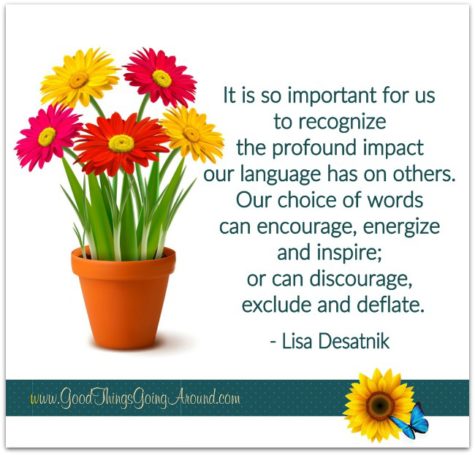 to influence our ability to succeed or fail as individuals, as a community.
to influence our ability to succeed or fail as individuals, as a community.
I have seen children raised in the most difficult of circumstances grow to be resilient leaders due in part to the positive role models in their lives who focused on strengths. I have seen flourishing workplaces where employees excel because they are working in a nurturing environment where management and colleagues understand the value of positive reinforcement. And I have seen people who do, think and say things differently with confidence and fortitude because the opinions, actions and yes, words, of those in their lives have fostered a sense of belonging, understanding, and ability.
For as long as I have been an adult, through all the many years that I have worked with disability related organizations, that I have simply lived and experienced relationships, I have disliked the words ‘mental retardation’. The words have a visceral effect on me. It just sounds derogatory and belittling to me, perhaps because of the horrible feeling I got in the pit of my stomach when I heard the abbreviation, ‘retard’. That same ugly feeling I get when I hear words referred to other groups of people aimed at knocking them down.
I recognize that to many, those words ‘mental retardation’ may conjure no negative or positive meaning. They are simply six syllables taught to describe a population.
Diana Mairose, an advocate support advisor for Hamilton County Developmental Disabilities Services, has been tirelessly working to change the vocabulary used to refer to people with disabilities. She is the major reason why the word ‘handicapped’ was removed from the blue accessibility signs locally and statewide. In 2009, she helped remove the words ‘mental retardation’ from the State of Ohio; however, not in the Ohio Revised Code…until last week. (You can read more about her in this post.)
In front of about 100 people – i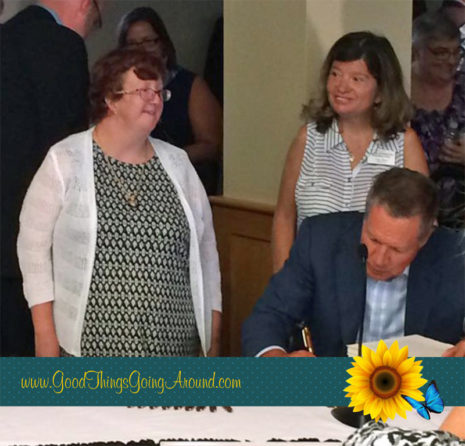 ncluding Diana – Governor John Kasich signed into law Ohio House Bill 158, which formally removes the MR phrase in the Ohio Revised Code, replacing it with the more respectful ‘intellectual disability’.
ncluding Diana – Governor John Kasich signed into law Ohio House Bill 158, which formally removes the MR phrase in the Ohio Revised Code, replacing it with the more respectful ‘intellectual disability’.
“It was a very honored occasion,” Diana told me. “I am really happy that the people in government can see how it will show respect to so many people we serve. Mental retardation are words we need to stop using all together.”
Now it is our turn, to make a conscious decision to stop using words that discourage, exclude and deflate people. And, instead, use our language to rise people up, energize, include and inspire them.
When we do that, we all will benefit.


